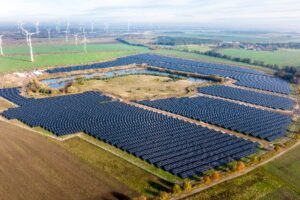A Battery Breakthrough That Could Charge Your EV in Minutes

High price and the range are key factors when deciding to buy an electric vehicle (EV). However, waiting tens of minutes or even hours to charge your EV, can make the difference between buying an electric vehicle or a conventional car today.
Non-EV owners always say that they don’t have time to spend waiting at the charging station until the battery reaches at least 80 percent, but what if we could recharge our EV in less than 10 minutes? Would change this the decision in the favor of an EV when buying a new vehicle?
EVs are still more expensive that conventional vehicles
The truth is that electric cars still aren’t cheap enough to make them attractive for new buyers, and this is due to battery manufacturing costs.
According to Bloomberg, the manufacturing cost of a lithium-ion battery pack, dropped by 89 percent over the last decade, reaching $132/kWh in 2021.
Battery manufacturing costs are expected to drop to $100/kWh by 2023, and this could bring the price of the EVs down to the level of the fossil-fueled cars.
Range anxiety is another issue affecting the sales of EVs. More than half of new car buyers, won’t get an EV just because they are afraid of not making it to the next charging station.
Battery energy density has nearly tripled over the last decade
Battery-cell energy densities have almost tripled in the last decade, and this means that today’s EVs can now store much more power per unit of volume/weight, and this gives a longer range.
The median range of EVs sold in the U.S. in 2020, hit the 250 mile mark, which is about four times higher than what you could get in 2011.
However, for long trips, you still have to do a pit-stop at some point to recharge the battery, and even if you can eat during this time, it is still a much longer time period compared to the time spent at the pump to refill your tank.
The problem is that fast chargers still aren’t as plentiful as they need to be or as fast as drivers would like to be.
When do EV charging will rival a gas tank’s refueling time?
The fastest chargers available today are called level 3 or direct-current fast charging (DCFC) models. Sadly, these charges can’t be installed in your home because they work between 400 and 900 V (volt), which is much higher than standard residential electricity.

The fastest chargers (350 KW) available today are called DCFC, source: EVgo
The most powerful chargers operate at 350 KW, and can charge an EV up to 80 percent in about 20 minutes. However, these DCFC chargers are still pretty rare because you can find them in about 26 percent of the public charging stations in the United States.
More than that, about 90 percent of DCFC ports across the U.S. network operate below 300 KW, and this is happening because they are too expensive to roll out.
The cost to install a 150-KW charger is about $150,000. Beside infrastructure costs, heat is another issue affecting fast charging.
When you send too much current through the charging cables, you will have more energy lost as heat because of the resistance encountered along the way. As a result, the battery liquid electrolyte may boil off, which will build pressure inside the battery cell. This process called swelling or gassing could cause ruptures or even explosions.
Battery cables are becoming piping hot so, some researchers came up with an innovative cooling method that lets battery cords handle 5 times the current of a Tesla Supercharger. However, this is still an early stage prototype.
Another key hurdle to overcome is to find more efficient raw materials for the battery anode.
In commercial batteries, the anode is made mainly of graphite. However, while charging, a cloud of lithium ions (concentration gradient) shuttles from the cathode towards the anode. When the ions reach the negative pole, they nestle is the space between graphite layers. This process called intercalation, becomes messy when we increase current intensity, and instead of defusing inside the graphite matrix, ions lay in to its surface creating a metallic plate (lithium plating).
This lithium metal barrier will prevent future ions from accessing the graphite’s internal structure, which means that your battery will no longer recharge.
One way to sort this out is to charge the battery at a higher temperature like 60°C (140°F), but this could shorten the battery’s life. Increasing the charging temperature of a lithium-ion battery from 25°C (77°F) to 55°C (131°F), researchers found that the graphite anode degrades up to 8 times more over 50 cycles. This again, reduces the battery’s lifespan.
Researchers found that they can solve this by exposing the battery to 60°C (140°F), only for a brief period of time. However, this may work mainly in the lab not in real life.
A startup called StoreDo
A startup called StoreDo recently announced a new battery technology that seems an improvement compared to the current Tesla 4680 battery cell.
StoreDo (an Israeli company) promises an increased range and a decrease of the EVs cost. To increase the battery lifespan they changed the design of the battery chemistry and the anodes.
Conventional lithium-ion batteries use mainly graphite anodes, which managed to improve the current energy densities used by the battery cell, but they also imposed limits on charge speeds as well as the lifecycle of the batteries.
The company replaced the graphite anodes with anodes made of a silicon-dominant material, which allows the battery cell take on much more energy without doing any damage the cells.
StoreDot claims that its batteries will charge much faster and will increase energy storage. This way, EV drivers will get rid of range anxiety which today is a main key when deciding to buy an EV or a conventional vehicle.







